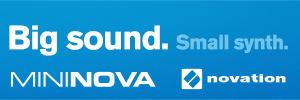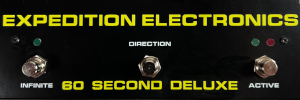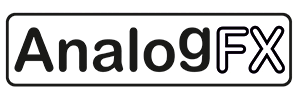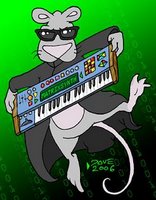
Showing posts sorted by date for query Gearjunkies. Sort by relevance Show all posts
Showing posts sorted by date for query Gearjunkies. Sort by relevance Show all posts
Wednesday, November 10, 2021
Fred's Lab Zekit synthesizer Assembly and review
video upload by Gearjunkies
"The Zekit is a small analog-digital hybrid synthesizer, and it is available readymade or as a kit. In this video, we'll show you how to build this analog synthesizer, and you'll get an in-depth review.
Thanks to: https://fredslab.net/en/zekit-module.php"
Wednesday, September 15, 2021
Superbooth 2021 Interview Kim Bjorn Bjooks about Synth Gems 1
video upload by Gearjunkies
"In an interview on Superbooth 2021, Kim Bjorn of Bjooks tells us all about his new book Synth Gams 1. This book, written by Mike Metlay, contains many hidden synthesizer gems. The book is also good reading for non synth-nerds."
See How to discover SYNTH GEMS for details.
Superbooth 21 Fred's Lab ZeKit 4 voice polyphonic synthesizer
video upload by Gearjunkies
"At Superbooth 2021 in Berlin, Frédéric from Fred's Lab shows you his latest 4 voice polyphonic synthesizer, the ZeKit"
Fred's Lab ZeKit posts
Tuesday, September 29, 2020
New Softube - Model 72 Synthesizer System
SoftubeStudios
"The monophonic legend, perfected. An entire system based on a classic analog synth from the early 1970s, with the emphasis on sound quality. Use it as an instrument, as an effect, in Softube Modular, and in Softube Amp Room."
MrFirechild
"Here is a track using sounds only from the Softube Model 72 Synthesizer System, a great sounding software synthesizer. The sounds in the track can be found as factory presets in the plugin.
The track is called The Swedish Model and can be found on the Firechild album The White Whale (2020).
Composed and produced by www.firechild.se"
Sequential Circuits Prophet T8 as the keyboard controller.
Softube Model 72 Synthesizer System first look and sounds
Gearjunkies
"The Model 72 Synthesizer System is Softube's latest plug-in. It's a reincarnation of a famous 70's synthesizer, can you guess which one? In this video Marc shows you this new soft synth, and you get an audio demo."
Priced at $99
"Based on a classic analog monophonic synth from the early '70s, with the emphasis on sound quality
A component-modeled marvel that’s true to its era with actual use cases and tricks correctly replicated in the software to take you to funkytown
An entire system that includes a model of the original instrument, an FX version, an Amp Room module, and seven Modular modules
Imagine traveling in time to the early '70s, an era where new and experimental sounds were shaping pop music and taking it a step further. Softube's Model 72 Synthesizer System is your vintage synth time machine. It's component modeled down to the smallest details with from 1972 hardware in pristine condition with all the quirks and non-linearities intact, hence the name Model 72.
The result is incredibly authentic sound, with all the warmth and smoothness heard in countless records. Now imagine this classic has traveled into the future to pick up some contemporary features like doubling and spread to create a stereo like sound image and evolve into a full system with multiple versions for different applications. Wish you were here? Take the Autobahn.
Designed by Experts, Built on Legacy
Softube has a long history of modeling professional gear. After nearly two decades working in collaboration with premium pro audio brands like Tube-Tech, Solid State Logic, Chandler Limited®, Weiss Engineering, and Trident, we have a solid track record recreating indisputable classics in software form that sound precisely like their hardware counterparts. This includes expertise in synthesizer plug-ins like Modular, Statement Lead, and Monoment Bass.
Model 72 is built on this legacy, and we took the same meticulous approach we always do – everything needs to be exact, with skillful recording, precise testing, and fine-tuning to sound exactly like the corresponding hardware or even better in terms of clarity. Nothing less."
https://www.softube.com/products/model-72-synthesizer-system
LABELS/MORE:
MOOG,
New,
New in 2020,
New Soft Synths,
New Soft Synths in 2020,
News,
Sequential Circuits,
Soft Synths
Wednesday, June 24, 2020
Sounds of the MODOR NF-1 digital DSP synthesizer - no talking
Gearjunkies
"In this new video Marc shows you his favorite sounds from the MODOR NF-1 digital DSP synthesizer"
Wednesday, February 26, 2020
Waldorf Kyra synthesizer 20 cool presets sound demo
Published on Feb 26, 2020 Gearjunkies
"The Waldorf Kyra is a beast of a digital synthesizer. Marc recorded 20 presets and he is happy to let you hear these."
Wednesday, January 01, 2020
Novation Supernova II Rack sound demo
Published on Jan 1, 2020 Gearjunkies
"The Novation Supernova II is a virtual analog synthesizer from the beginning of this century. It is the successor to the Supernova, which was launched in 1998.
In this new video you get text and explanation about this synthesizer, and Marc also shows you some sounds from the Supernova II."
Wednesday, December 25, 2019
Modor NF 1 digital synthesizer overview and sound demo
Published on Dec 25, 2019 Gearjunkies
"The Modor NF-1 is an 8-voice polyphonic virtual analog synthesizer desktop synthesizer, made in Belgium. It has a special formant filter, 448 presets and a nicely designed user interface. We think it is a really nice and special synthesizer, and we want to show you what is and what it can do in this video."
Monday, December 12, 2016
NOISECOLLECTIVE Modular Synth Masterclass Workshop with Gino Robair
NOISECOLLECTIVE is having a modular synth masterclass workshop with Gino Robair. The event will be held at the Mothership club in Turin Italy. You can pick up tickets at NOISECOLLECTIVE here. The following are the details on the event, first in Italian, then English further below.
IL WORKSHOP
Il workshop prenderà in esame una serie di tecniche da utilizzare durante l'improvvisazione con sintetizzatori modulari in un contesto di gruppo e pone le basi per un concerto la sera stessa, con i partecipanti al workshop.
Il workshop si concentrerà sulla sensibilizzazione e l'ascolto globale durante l' improvvisazione, esplorerà strategie di patching per ottenere la massima varietà ed evitare la stagnazione.
Verranno presi in esame concetti come primo piano / sottofondo, solista / supporto, controllo gestuale, e intenzione / non-intenzione.
Particolare interessante per i musicisti che utilizzano sintetizzatori modulari perché spesso la tentazione con lo strumento è quello di sovrapporre semplicemente suoni.
Gino utilizza strategie, concetti e spunti basati sul suo lavoro e sul lavoro di John Zorn, Butch Morris, ROVA Sax Quartet, Anthony Braxton e Frank Zappa.
I partecipanti devono portare un loro strumento. Possono utilizzare qualsiasi synth analogico, anche se il workshop è prevalentemente incentrato sui sintetizzatori modulari.
Saturday, October 19, 2013
Dave Smith Instruments Prophet 12 Desktop Rack in the Works
pics via Amazona.de where you'll find an interview in German with Dave Smith (Googlish translation here).
"Well, hold your horses, it is not available, not for a while that is. Dave Smith is only showing his protoyope at the moment. So all is still in development. Of course the technical underlyings are the same as the Prophet12 keyboard version. According to Dave Smith it will be ideal for the musician who doesn't want yet another keyboard in his studio..."
via Gearjunkies.
Friday, September 06, 2013
RIP Dick Raaymakers aka Kid Baltan
Update: new link and video below.
Gearjunkies wrote in to let us know Dick Raaymakers passed away this week on Wednesday Sept 4, 2013. He was a pioneer of electronic music, primarily working with tape producing musique concrete. Below is a video of one of his compositions with Tom Dissevelt posted here on MATRIXSYNTH back in 2009. Be sure to see the Gearjunkies post as well for another video.
via Wikipedia: "From 1954 to 1960 he worked in the field of electro-acoustic research at Royal Philips Electronics Ltd. in Eindhoven. There, using the alias Kid Baltan, he and Tom Dissevelt, under the name Electrosoniks produced works of popular music by electronic means (which turned out to be the first attempts of their kind in the world).[1] From 1960 to 1962 he then worked at the University of Utrecht as a scientific staff member. From 1963 to 1966, together with Jan Boerman, he worked in his own studio for electronic music in the Hague. Then, from 1966 until his retirement in 1995, he worked as a teacher of Electronic and Contemporary Music at the Royal Conservatoire (The Hague) and since 1991 also as a teacher of Music Theatre at the Image and Sound Interfaculty, at the same conservatory..."
Kid Baltan and Tom Dissevelt 1959
Uploaded on Nov 29, 2008 schreu26·39 videos (originally posted here)
Update via Pierre Serné on The MATRIXSYNTH Lounge:
"More about Dutch electronic and tape music Pioneer Dick Raaijmakers, who passed away last Wednesday at the age of 83:
http://patchpierre.blogspot.nl/2013/09/rip-dick-raaijmakers.html
- The interview is in Dutch but has English subtitles
Also worth watching: "Intona",a music-theater piece conceived by Dick Raaymakers.
It was performed amongst others on October 17, 1992 at V2_ in 's Hertogenbosch."
Dick Raaijmakers - Intona (Full Version) (1992)
Uploaded on Dec 23, 2010 V2unstable·275 videos
"More info: http://www.v2.nl/archive/works/intona
"Intona" is a music-theater piece conceived by Dick Raaymakers. It was performed amongst others on October 17, 1992 at V2_ in 's Hertogenbosch.
Intona is the counterpart of the work Three Ideophones. If in Three Ideophones the loudspeaker has the stage, in Intona, it is the microphone that is given a chance to express itself. In music, microphones are normally used for reproductive ends, i.e., to record music as faithfully as possible. But there is also an alternative use, a more subversive one, stemming from the 1960s, when musicians ripped the stable, fixed microphone from its stand and mobilized it. Pop musicians did this during concerts, but so did composers like Karlheinz Stockhausen, who made a number of microphones move like jet planes according to preset, plotted routes across the surface of a gigantic tom-tom. His intention was to create a new, "open" kind of music by submitting the movements of the microphones to compositional laws, thereby making them part of the whole compositional plan, not as a special effect but as musical instruments. The "microphonist" became an "instrumentalist." If there were a kind of Beaufort scale for measuring a microphone's degree of mobility and expressing it in values 1 to 10, 1 would stand for perfect immobility and stability, and 10 for extreme mobility or even total incorporeality. Numbers 1 and 2 on this scale would be reserved for recording the classical repertoire in all its splendor and glory. Above chamber music ensembles and symphony orchestras, the most sensitive microphones hang like so many motionless leaves on a tree. From this position, they can pick up the slightest sound made by an ensemble and save it for posterity. The mobility of these microphones should ideally tend towards zero. Modern composers like David Tudor, Karlheinz Stockhausen and John Cage would score a 5, 6 or 7. Pop musicians, with their mobile electric guitars and microphones, despite their roughness, stall at just 4. The challenge Intona takes up is to bring the remaining numbers 8, 9 and 10 into the picture. One must realize that at a mobility factor of 10, a microphone will dissolve entirely and disappear into the void. This occurs in Intona, not only as a result of brute implosive or explosive violence -- there's no art in that -- but in the intention of playing the microphone as expertly as possible."
Gearjunkies wrote in to let us know Dick Raaymakers passed away this week on Wednesday Sept 4, 2013. He was a pioneer of electronic music, primarily working with tape producing musique concrete. Below is a video of one of his compositions with Tom Dissevelt posted here on MATRIXSYNTH back in 2009. Be sure to see the Gearjunkies post as well for another video.
via Wikipedia: "From 1954 to 1960 he worked in the field of electro-acoustic research at Royal Philips Electronics Ltd. in Eindhoven. There, using the alias Kid Baltan, he and Tom Dissevelt, under the name Electrosoniks produced works of popular music by electronic means (which turned out to be the first attempts of their kind in the world).[1] From 1960 to 1962 he then worked at the University of Utrecht as a scientific staff member. From 1963 to 1966, together with Jan Boerman, he worked in his own studio for electronic music in the Hague. Then, from 1966 until his retirement in 1995, he worked as a teacher of Electronic and Contemporary Music at the Royal Conservatoire (The Hague) and since 1991 also as a teacher of Music Theatre at the Image and Sound Interfaculty, at the same conservatory..."
Kid Baltan and Tom Dissevelt 1959
Uploaded on Nov 29, 2008 schreu26·39 videos (originally posted here)
Update via Pierre Serné on The MATRIXSYNTH Lounge:
"More about Dutch electronic and tape music Pioneer Dick Raaijmakers, who passed away last Wednesday at the age of 83:
http://patchpierre.blogspot.nl/2013/09/rip-dick-raaijmakers.html
- The interview is in Dutch but has English subtitles
Also worth watching: "Intona",a music-theater piece conceived by Dick Raaymakers.
It was performed amongst others on October 17, 1992 at V2_ in 's Hertogenbosch."
Dick Raaijmakers - Intona (Full Version) (1992)
Uploaded on Dec 23, 2010 V2unstable·275 videos
"More info: http://www.v2.nl/archive/works/intona
"Intona" is a music-theater piece conceived by Dick Raaymakers. It was performed amongst others on October 17, 1992 at V2_ in 's Hertogenbosch.
Intona is the counterpart of the work Three Ideophones. If in Three Ideophones the loudspeaker has the stage, in Intona, it is the microphone that is given a chance to express itself. In music, microphones are normally used for reproductive ends, i.e., to record music as faithfully as possible. But there is also an alternative use, a more subversive one, stemming from the 1960s, when musicians ripped the stable, fixed microphone from its stand and mobilized it. Pop musicians did this during concerts, but so did composers like Karlheinz Stockhausen, who made a number of microphones move like jet planes according to preset, plotted routes across the surface of a gigantic tom-tom. His intention was to create a new, "open" kind of music by submitting the movements of the microphones to compositional laws, thereby making them part of the whole compositional plan, not as a special effect but as musical instruments. The "microphonist" became an "instrumentalist." If there were a kind of Beaufort scale for measuring a microphone's degree of mobility and expressing it in values 1 to 10, 1 would stand for perfect immobility and stability, and 10 for extreme mobility or even total incorporeality. Numbers 1 and 2 on this scale would be reserved for recording the classical repertoire in all its splendor and glory. Above chamber music ensembles and symphony orchestras, the most sensitive microphones hang like so many motionless leaves on a tree. From this position, they can pick up the slightest sound made by an ensemble and save it for posterity. The mobility of these microphones should ideally tend towards zero. Modern composers like David Tudor, Karlheinz Stockhausen and John Cage would score a 5, 6 or 7. Pop musicians, with their mobile electric guitars and microphones, despite their roughness, stall at just 4. The challenge Intona takes up is to bring the remaining numbers 8, 9 and 10 into the picture. One must realize that at a mobility factor of 10, a microphone will dissolve entirely and disappear into the void. This occurs in Intona, not only as a result of brute implosive or explosive violence -- there's no art in that -- but in the intention of playing the microphone as expertly as possible."
Wednesday, April 24, 2013
Novation Bass Station II - Gearjunkies MusikMesse demo
Published on Apr 23, 2013 gearjunkies·90 videos
"We met up with Novation and took the opportunity to shoot a short video. Listen to some of the 'analogue' sounds of this updated synth!"
Added to the main MusikMesse BassStation II post here. You can find the full list of Musikmesse synths here.
"We met up with Novation and took the opportunity to shoot a short video. Listen to some of the 'analogue' sounds of this updated synth!"
Added to the main MusikMesse BassStation II post here. You can find the full list of Musikmesse synths here.
Monday, April 08, 2013
Introducing the Novation BassStation 2 All Analog Synth
Novation // 21 Years of Innovation
Published on Apr 8, 2013 NovationTV·156 videos

"Bass Station II is an analogue mono-synth based on the classic original Bass Station but re-worked for the 21st century. It has two filters, two oscillators plus a third sub-oscillator, patch save and a fully analogue effects section. Add a step sequencer, arpeggiator, full sized keys and a powerful modulation section and you have the makings of a synth that is built for bass, but capable of so much more.
Bass Station II marks Novation's 21st birthday - find out more about Novation's early synths and how the technology evolved over 20 years"
 What is it?
What is it?
Bass Station II is an analogue mono-synth with a talent for bass, but a sound-engine that is versatile enough to kick out sharp leads and crisp arpeggios. It brings the best elements of the original Bass Station into a brand new design with re-worked modulation, effects, filters and more; like the Bass Station, but a much much bigger sound.
The signal path is pure analogue - including the effects section. The hardware has been laid out in modules with dedicated pots, switches, sliders and buttons for all major parameters. Critically, you can store and recall patches on Bass Station II. It comes with 64 killer factory presets, space for 64 of your own sounds on the hardware, and you can store more on your computer.
 The key-mech consists of 25 full sized keys that are velocity sensitive with assignable aftertouch. It has been developed as a ‘synth-action’ keyboard, where each key is individually sprung so it is light to the touch and highly responsive to the synth engine. Bass Station II is a fully class compliant MIDI device with MIDI I/O on 5 pin din ports – for connecting to other MIDI outboard – and with your computer over USB. You can even connect an external instrument and run it through Bass Station II's analogue filter and effects."
The key-mech consists of 25 full sized keys that are velocity sensitive with assignable aftertouch. It has been developed as a ‘synth-action’ keyboard, where each key is individually sprung so it is light to the touch and highly responsive to the synth engine. Bass Station II is a fully class compliant MIDI device with MIDI I/O on 5 pin din ports – for connecting to other MIDI outboard – and with your computer over USB. You can even connect an external instrument and run it through Bass Station II's analogue filter and effects."
"The Synth Engine: A Brief Overview
Oscillators: Bass Station II is built on three analogue oscillators and a noise generator. There are two fully independent oscillators plus a sub oscillator (which is the critical component in creating rich, analogue bass sounds). Oscillators One and Two are switchable between sine, sawtooth, square and variable pulse width, and Oscillator Three - the sub osc - can be set to one or two octaves below Oscillator One. It can be square, sine or narrow pulse width, delivering the characteristically ‘fat’ bass tone.
Filters: You can select between two discrete filters - ‘Acid’ or ‘Classic’ - each with a built in overdrive for pushing filter tones from dry, to warm, to nasty! The ‘Classic’ Bass Station filter can be switched between low pass, high pass and band pass at 12 or 24dB slopes. The ‘Acid’ filter is based on a diode ladder filter design that delivers a characteristically 303-esque sound that is designed to squelch!
Effects
Bass Station II has two effects (not including the filter overdrive). Analogue distortion drives circuit components to add new frequencies to the sound. Bass Station II’s Distortion function can add gentle warmth, filthy granularity and anything in between. The second effect is ‘Osc Filter Mod’ which creates a distinctive FM-type sound by using Oscillator Two to modulate the filter frequency. This is very good at crunchy, sound-mulching effects that substantially fatten up bass and lead patches.
Modulation
There are two envelope generators and two low frequency oscillators (LFOs). The first envelope is an ADSR amp envelope and the second is a mod envelope that can be used to modulate filter frequency, oscillator pitch and osc pulse width. LFO One is dedicated to pitch modulation whereas LFO is used to modulate osc pulse width and filter frequency. Although it looks like there are four LFO waveforms, the ‘LFO Slew’ function can be used freely to sculpt LFOs into smoother wave-shapes creating many more LFO possibilities.
Arpeggiator and step sequencer
Bass Station II’s Arpeggiator and Step Sequencer are killer performance and production tools. The Arp can be directed to run through 32 different rhythmic patterns in different directions with a switchable octave range. You can also engage the Step Sequencer. Up to four sequences can be played in – with legato and rests – and played back using any one of the 32 rhythmic patterns. As well as getting ideas down quickly and programming performance sequences, this is a brilliant way to preview patches while you are editing them.
This just scratches the surface of the synth engine. Bass Station II is a powerful little synth with a lot more than first meets the eye. There are many more oscillator, envelope, LFO and modulation functions that are too numerous to detail here. The best way to experience Bass Station II is to get hands-on!
Specs:
Published on Apr 8, 2013 NovationTV·156 videos

"Bass Station II is an analogue mono-synth based on the classic original Bass Station but re-worked for the 21st century. It has two filters, two oscillators plus a third sub-oscillator, patch save and a fully analogue effects section. Add a step sequencer, arpeggiator, full sized keys and a powerful modulation section and you have the makings of a synth that is built for bass, but capable of so much more.
Bass Station II marks Novation's 21st birthday - find out more about Novation's early synths and how the technology evolved over 20 years"
 What is it?
What is it?Bass Station II is an analogue mono-synth with a talent for bass, but a sound-engine that is versatile enough to kick out sharp leads and crisp arpeggios. It brings the best elements of the original Bass Station into a brand new design with re-worked modulation, effects, filters and more; like the Bass Station, but a much much bigger sound.
The signal path is pure analogue - including the effects section. The hardware has been laid out in modules with dedicated pots, switches, sliders and buttons for all major parameters. Critically, you can store and recall patches on Bass Station II. It comes with 64 killer factory presets, space for 64 of your own sounds on the hardware, and you can store more on your computer.
 The key-mech consists of 25 full sized keys that are velocity sensitive with assignable aftertouch. It has been developed as a ‘synth-action’ keyboard, where each key is individually sprung so it is light to the touch and highly responsive to the synth engine. Bass Station II is a fully class compliant MIDI device with MIDI I/O on 5 pin din ports – for connecting to other MIDI outboard – and with your computer over USB. You can even connect an external instrument and run it through Bass Station II's analogue filter and effects."
The key-mech consists of 25 full sized keys that are velocity sensitive with assignable aftertouch. It has been developed as a ‘synth-action’ keyboard, where each key is individually sprung so it is light to the touch and highly responsive to the synth engine. Bass Station II is a fully class compliant MIDI device with MIDI I/O on 5 pin din ports – for connecting to other MIDI outboard – and with your computer over USB. You can even connect an external instrument and run it through Bass Station II's analogue filter and effects.""The Synth Engine: A Brief Overview
Oscillators: Bass Station II is built on three analogue oscillators and a noise generator. There are two fully independent oscillators plus a sub oscillator (which is the critical component in creating rich, analogue bass sounds). Oscillators One and Two are switchable between sine, sawtooth, square and variable pulse width, and Oscillator Three - the sub osc - can be set to one or two octaves below Oscillator One. It can be square, sine or narrow pulse width, delivering the characteristically ‘fat’ bass tone.
Filters: You can select between two discrete filters - ‘Acid’ or ‘Classic’ - each with a built in overdrive for pushing filter tones from dry, to warm, to nasty! The ‘Classic’ Bass Station filter can be switched between low pass, high pass and band pass at 12 or 24dB slopes. The ‘Acid’ filter is based on a diode ladder filter design that delivers a characteristically 303-esque sound that is designed to squelch!
Effects
Bass Station II has two effects (not including the filter overdrive). Analogue distortion drives circuit components to add new frequencies to the sound. Bass Station II’s Distortion function can add gentle warmth, filthy granularity and anything in between. The second effect is ‘Osc Filter Mod’ which creates a distinctive FM-type sound by using Oscillator Two to modulate the filter frequency. This is very good at crunchy, sound-mulching effects that substantially fatten up bass and lead patches.
Modulation
There are two envelope generators and two low frequency oscillators (LFOs). The first envelope is an ADSR amp envelope and the second is a mod envelope that can be used to modulate filter frequency, oscillator pitch and osc pulse width. LFO One is dedicated to pitch modulation whereas LFO is used to modulate osc pulse width and filter frequency. Although it looks like there are four LFO waveforms, the ‘LFO Slew’ function can be used freely to sculpt LFOs into smoother wave-shapes creating many more LFO possibilities.
Arpeggiator and step sequencer
Bass Station II’s Arpeggiator and Step Sequencer are killer performance and production tools. The Arp can be directed to run through 32 different rhythmic patterns in different directions with a switchable octave range. You can also engage the Step Sequencer. Up to four sequences can be played in – with legato and rests – and played back using any one of the 32 rhythmic patterns. As well as getting ideas down quickly and programming performance sequences, this is a brilliant way to preview patches while you are editing them.
This just scratches the surface of the synth engine. Bass Station II is a powerful little synth with a lot more than first meets the eye. There are many more oscillator, envelope, LFO and modulation functions that are too numerous to detail here. The best way to experience Bass Station II is to get hands-on!
Specs:
Friday, November 02, 2012
Novation MiniNova with Dorian Concept
Published on Nov 2, 2012 by gearjunkies
"Dorian Concept got a MiniNova from Novation and this is what they did with it!"
Novation MiniNova's on eBay
Wednesday, August 01, 2012
DSI Mopho x4 Keyboard Synthesizer Available Now

"Dave Smith Instruments is just a week away from introducing DSI's new Mopho x4 synthesizer keyboard to the world. This new synth is polyphonic Mopho keyboard! The Mopho x4 is the newest addition to DSI's revered line of analog subtractive synthesizers. Building upon the same award winning voice architecture of the Mopho and Mopho Keyboard, the Mopho x4 boasts huge sound and 4 voice polyphony in an ideally sized, portable, and elegantly designed package. Use it to create huge unison basses, creamy leads, maniacal sequences, and ethereal pads. The Mopho x4 is sure to satisfy all your polyphonic analog synthesis needs.
4 times the voice 4 your pleasure
Each of Mopho x4's four voices is composed of two analog oscillators, two sub octave generators, selectable 2- or 4-pole famed Curtis low-pass filter, three 5-stage envelope generators, four LFOs, a re-latchable arpeggiator, and a 16 x 4 step sequencer. Its voice also comes packed with 20 modulation sources and almost 50 destinations!
You can FM the filter to create metallic bell-like sounds and use the feedback path to add subtle or destructive harmonic content to your sound. Mopho x4's 100% analog signal path is powerful, monstrous, and sonically dynamic!
Work less, play more
Mopho x4 is intuitive and inviting. Every parameter is fully programmable and editable from the front panel. The controls are logically laid out, lending themselves to quick access so you can tweak knobs without missing a beat.
The x4's full sized 44-note semi-weighted keyboard has aftertouch and velocity sensitivity. The sturdy full sized pitch and mod wheels are freely assignable and sport smooth reliable action.
It grows with you
Expand Mopho x4's polyphony using its Poly Chain port. Mopho, Tetra, and Prophet '08 can all be connected to the x4 to increase its voice count. You can Poly Chain up to three Tetras with Mopho x4 to create a 16 voice analog super synth!
The Mopho x4!
Dave Smith Instruments is the only company pioneering and producing fully programmable polyphonic analog synthesizers. In fact Dave's been at it for 35 years!
Designed and manufactured in San Francisco, Mopho x4 has the high quality sound and build for which DSI is renowned. From its feature packed analog voices and unmatched sonic versatility to its refined design and engaging interface, you won't find a polyphonic analog synthesizer like this anywhere else.
The Mopho x4 will be priced at $1,299 US MAP!"
Spotted on Gearjunkies
Update: It looks like the info went live at http://www.davesmithinstruments.com/. Intro video below.
Mopho x4 Synthesizer Keyboard Introduction
Published on Aug 1, 2012 by DaveSmithInstruments

"It's a polyphonic Mopho keyboard! Mopho x4 is the newest addition to DSI's revered line of analog subtractive synthesizers. Building upon the same award winning voice architecture of the Mopho and Mopho Keyboard, the Mopho x4 boasts huge sound and 4 voice polyphony in an ideally sized, portable, and elegantly designed package.
 Use it to create huge unison basses, creamy leads, maniacal sequences, and ethereal pads. 4 times the voice 4 your pleasure Each of Mopho x4's four voices is composed of two analog oscillators, two sub octave generators, selectable 2- or 4-pole famed Curtis low-pass filter, three 5-stage envelope generators, four LFOs, a re-latchable arpeggiator, and a 16 x 4 step sequencer. Its voice also comes packed with 20 modulation sources and almost 50 destinations! FM the filter to create metallic bell-like sounds and use the feedback path to add subtle or destructive harmonic content to your sound. Mopho x4's 100% analog signal path is powerful, monstrous, and sonically dynamic! Work less, play more Mopho x4 is intuitive and inviting. Every parameter is fully programmable and editable from the front panel. The controls are logically laid out, lending themselves to quick access so you can tweak knobs without missing a beat. The x4's full sized 44-note semi-weighted keyboard has aftertouch and velocity sensitivity. The sturdy full sized pitch and mod wheels are freely assignable and sport smooth reliable action. It grows with you Expand Mopho x4's polyphony using it's Poly Chain port. Mopho, Tetra, and Prophet '08 can all be connected to the x4 to increase its voice count. You can Poly Chain up to three Tetras with Mopho x4 to create a 16 voice analog super synth! The Mopho x4! Dave Smith Instruments is the only company pioneering and producing fully programmable polyphonic analog synthesizers. In fact Dave's been at it for 35 years! Designed and manufactured in San Francisco, Mopho x4 has the high quality sound and build for which DSI is renowned. From its feature packed analog voices and unmatched sonic versatility to its refined design and engaging interface, you won't find a polyphonic analog synthesizer like this anywhere else." http://www.davesmithinstruments.com/
Use it to create huge unison basses, creamy leads, maniacal sequences, and ethereal pads. 4 times the voice 4 your pleasure Each of Mopho x4's four voices is composed of two analog oscillators, two sub octave generators, selectable 2- or 4-pole famed Curtis low-pass filter, three 5-stage envelope generators, four LFOs, a re-latchable arpeggiator, and a 16 x 4 step sequencer. Its voice also comes packed with 20 modulation sources and almost 50 destinations! FM the filter to create metallic bell-like sounds and use the feedback path to add subtle or destructive harmonic content to your sound. Mopho x4's 100% analog signal path is powerful, monstrous, and sonically dynamic! Work less, play more Mopho x4 is intuitive and inviting. Every parameter is fully programmable and editable from the front panel. The controls are logically laid out, lending themselves to quick access so you can tweak knobs without missing a beat. The x4's full sized 44-note semi-weighted keyboard has aftertouch and velocity sensitivity. The sturdy full sized pitch and mod wheels are freely assignable and sport smooth reliable action. It grows with you Expand Mopho x4's polyphony using it's Poly Chain port. Mopho, Tetra, and Prophet '08 can all be connected to the x4 to increase its voice count. You can Poly Chain up to three Tetras with Mopho x4 to create a 16 voice analog super synth! The Mopho x4! Dave Smith Instruments is the only company pioneering and producing fully programmable polyphonic analog synthesizers. In fact Dave's been at it for 35 years! Designed and manufactured in San Francisco, Mopho x4 has the high quality sound and build for which DSI is renowned. From its feature packed analog voices and unmatched sonic versatility to its refined design and engaging interface, you won't find a polyphonic analog synthesizer like this anywhere else." http://www.davesmithinstruments.com/
Saturday, March 31, 2012
Propellerhead Software Figure Announcement at the Musikmesse
YouTube Uploaded by HarmonyCentral on Mar 30, 2012
"This iPhone app is like a mini-Reason. The combination of super-bright screen in a dark room freaked out my camera, but the description and audio get the point across."
Gearjunkies at :30 and Nick from Sonic State at :42 (voice at :54). These posts are just as much about capturing the context of the event as the news itself - little bits of synth history captured in time.
Propellerhead Software AB
iPads on eBay
iPod Touch on eBay
Thursday, March 31, 2011
V-Station for the iPad?
 via Gearjunkies
via Gearjunkies"The iPad will become more and more a musical tool in the studio and beyond. Last year we saw some synths being recreated for the iPad by Korg for example. Just a few days ago we were sent a picture of another 'famous' synth being 'recreated' as an app. Is Novation taking the plunge in the app market with a V-Station (HD) app? It seems legit as the V-Station was the VSTi version of their hardware K-Station."
Novation on iTunes
iPads on eBay
Wednesday, January 12, 2011
Yamaha announces KARMA Motif Software for PC and Mac
"Yamaha and Karma-Lab announces the development and release of KARMA Motif Software for PC and Mac. This new entry in the renowned developer’s line of software applications brings the award-winning and patented KARMA algorithmic music technology to the Yamaha Motif XS and Yamaha Motif XF platforms.
“This exciting new collaboration brings the power of KARMA to a completely new user base using the great sounds and features of the Yamaha Motif series,” said KARMA developer Stephen Kay, who will demonstrate the software at NAMM.
“This will add a whole new dimension to the Motif experience.” KARMA Motif debuts the new KARMA 3.0 technology with a host of new features including eight-track design (six KARMA Modules and two Keyboard Layers) per Performance, per-track Volume and Mute stored in each of the 32 Scenes and the ability to individually adjust the mix of all parts in each Scene.
Users are also able to control Velocity Response Curves by individually tailoring the velocity response for the left hand keyboard, the right hand keyboard, the input to KARMA from the keyboard, and the 16 Chord Triggers (pads), without editing the Motif's programs or songs. A Fill/Stop Feature allows for the use of one or more modules as a melodic or drum fill with the ability to stop and start other modules automatically.
The Advanced Stutter Feature lets users retrigger the entire groove at different rhythmic resolutions, from machine-gun stutters to slow triplet hits. It also features a real-time Master Transpose function, Chord Triggers that can activate pre-programmed chords, hits, sound effects and even the Motif's arps. And, with the new KARMA software, all of the buttons and sliders on the Motif's interface (in Remote Mode) can be used to trigger the Chord Triggers and Fills, the Stutter feature, Scene changes, Scene mixes and real-time algorithmic variations.
KARMA Motif's Performances use the Motif's Song/Mixing mode, where each of the 64 songs is a complete KARMA algorithmic music groove with a left hand and right hand zone for controlling KARMA and soloing on top of it. The Motif's arps are also integrated in many performances as additional elements that can be added via the 16 Chord Triggers. While in Song Mode, players are just one step away from recording their KARMA-created musical performances into the Motif's sequencer, or the output can be routed to any DAW for external sequencing.
Furthermore, a KARMA Performance can call up any Motif Voice, Performance, Song, Pattern, or Master slot when loading, so that KARMA can be used in any of the Motif's modes.
“KARMA is one of the most innovative and interactive music software programs ever developed,” said Athan Billias, Director of Marketing at Yamaha’s Pro Audio & Combo division. “Combined with the incredible variety of Motif arps and unique features, like real-time Loop remix, KARMA and Motif combine to create one of the most powerful music production platforms available today.”
KARMA Motif Software for PC and Mac ($199) is scheduled to be available directly from Karma-Lab in April 2011"
via Gearjunkies
“This exciting new collaboration brings the power of KARMA to a completely new user base using the great sounds and features of the Yamaha Motif series,” said KARMA developer Stephen Kay, who will demonstrate the software at NAMM.
“This will add a whole new dimension to the Motif experience.” KARMA Motif debuts the new KARMA 3.0 technology with a host of new features including eight-track design (six KARMA Modules and two Keyboard Layers) per Performance, per-track Volume and Mute stored in each of the 32 Scenes and the ability to individually adjust the mix of all parts in each Scene.
Users are also able to control Velocity Response Curves by individually tailoring the velocity response for the left hand keyboard, the right hand keyboard, the input to KARMA from the keyboard, and the 16 Chord Triggers (pads), without editing the Motif's programs or songs. A Fill/Stop Feature allows for the use of one or more modules as a melodic or drum fill with the ability to stop and start other modules automatically.
The Advanced Stutter Feature lets users retrigger the entire groove at different rhythmic resolutions, from machine-gun stutters to slow triplet hits. It also features a real-time Master Transpose function, Chord Triggers that can activate pre-programmed chords, hits, sound effects and even the Motif's arps. And, with the new KARMA software, all of the buttons and sliders on the Motif's interface (in Remote Mode) can be used to trigger the Chord Triggers and Fills, the Stutter feature, Scene changes, Scene mixes and real-time algorithmic variations.
KARMA Motif's Performances use the Motif's Song/Mixing mode, where each of the 64 songs is a complete KARMA algorithmic music groove with a left hand and right hand zone for controlling KARMA and soloing on top of it. The Motif's arps are also integrated in many performances as additional elements that can be added via the 16 Chord Triggers. While in Song Mode, players are just one step away from recording their KARMA-created musical performances into the Motif's sequencer, or the output can be routed to any DAW for external sequencing.
Furthermore, a KARMA Performance can call up any Motif Voice, Performance, Song, Pattern, or Master slot when loading, so that KARMA can be used in any of the Motif's modes.
“KARMA is one of the most innovative and interactive music software programs ever developed,” said Athan Billias, Director of Marketing at Yamaha’s Pro Audio & Combo division. “Combined with the incredible variety of Motif arps and unique features, like real-time Loop remix, KARMA and Motif combine to create one of the most powerful music production platforms available today.”
KARMA Motif Software for PC and Mac ($199) is scheduled to be available directly from Karma-Lab in April 2011"
via Gearjunkies
Friday, December 10, 2010
Jonas Eriksson Synthesizer 76
 via Jonas Eriksson's website
via Jonas Eriksson's website"My name is Jonas Eriksson, an award winning Designer / Developer who is currently located in Sweden and Los Angeles, USA. I'm a Pixel-bitch Swede who love minimal things, good typography, grid based sites and who prefer solid coloring over gradients. Besides having a thing for clean design I am also into retro synthesizers, adventures, talented photographers, illustrators and creative copywriters. With six years of experience in both design (interactive, UI, digital illustration) and development (html/css, Flash Actionscript 2/3) I've had the luck to work with big clients like Coca Cola, Samsung, Sony, Lincoln, Warner, Universal, SYFY, 3M and many more. I have also been privileged to work for some of the most awesome agencies around the world. Even though its not a long story, it pretty much explains who I am. Visit my Blog where I share all kind of great things that inspires me. Add me on skype, msn, aim or fire away an e-mail if you would like to know more."
 more pics here
more pics herevia gearjunkies



Saturday, July 31, 2010
The End of Open Labs?
 http://openlabs.com/ - captured the image on their homepage at the time of this post. The image does not correspond to the following via the Statesman: "NOTICE OF PUBLIC SALE OPEN LABS, INC. MUSIC PRODUCTION EQUIP. Notice is hereby given that substantially all of the assets of Open Labs, Inc. will be sold at a public foreclosure sale to be held at 9:00 a.m. on Wednesday, August 4, 2010, at the offices of Open Labs, Inc., located at 3701 Drosset Drive, Suite 150, Austin, Texas 78744. The assets of Open Labs, Inc. consist primarily of the patents, trademarks, copyrights, and other IP associated with the following Open Labs products: NeKo XXL 61-Key Music Production Stations, NeKo QX6 61-Key Music Production Stations, MiKo LXD 37-key Music Production Stations, MiKo QC6 37- key Music Production Stations, DBeat Mobile Music Production Stations, SoundSlate Rack Units, SoundSlate FW Rack Units, Open RiFF 2.0 Software, MimiK Software, and other Open Labs products. The assets to be sold also include furniture and equipment, office supplies, artwork, and musical collectibles. For more info, contact Greg Young, Okin Adams & Kilmer LLP, 7004 Bee Cave, Bldg 1,Ste 110, Austin, TX, 78746, 512-681-3732."
http://openlabs.com/ - captured the image on their homepage at the time of this post. The image does not correspond to the following via the Statesman: "NOTICE OF PUBLIC SALE OPEN LABS, INC. MUSIC PRODUCTION EQUIP. Notice is hereby given that substantially all of the assets of Open Labs, Inc. will be sold at a public foreclosure sale to be held at 9:00 a.m. on Wednesday, August 4, 2010, at the offices of Open Labs, Inc., located at 3701 Drosset Drive, Suite 150, Austin, Texas 78744. The assets of Open Labs, Inc. consist primarily of the patents, trademarks, copyrights, and other IP associated with the following Open Labs products: NeKo XXL 61-Key Music Production Stations, NeKo QX6 61-Key Music Production Stations, MiKo LXD 37-key Music Production Stations, MiKo QC6 37- key Music Production Stations, DBeat Mobile Music Production Stations, SoundSlate Rack Units, SoundSlate FW Rack Units, Open RiFF 2.0 Software, MimiK Software, and other Open Labs products. The assets to be sold also include furniture and equipment, office supplies, artwork, and musical collectibles. For more info, contact Greg Young, Okin Adams & Kilmer LLP, 7004 Bee Cave, Bldg 1,Ste 110, Austin, TX, 78746, 512-681-3732."spotted this one on Gearjunkies.
NEXT PAGE
HOME
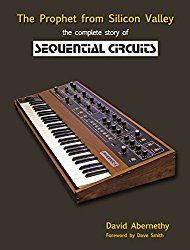
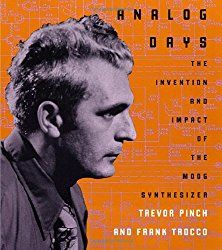
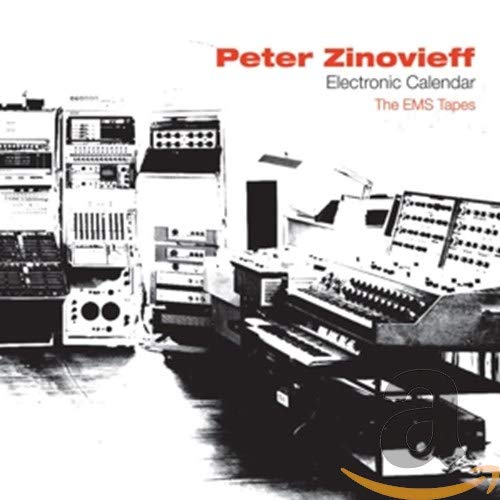
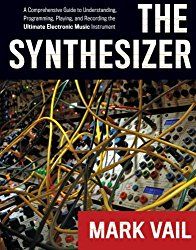
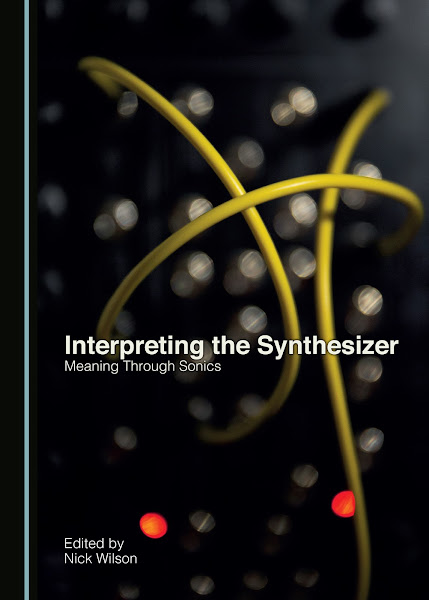
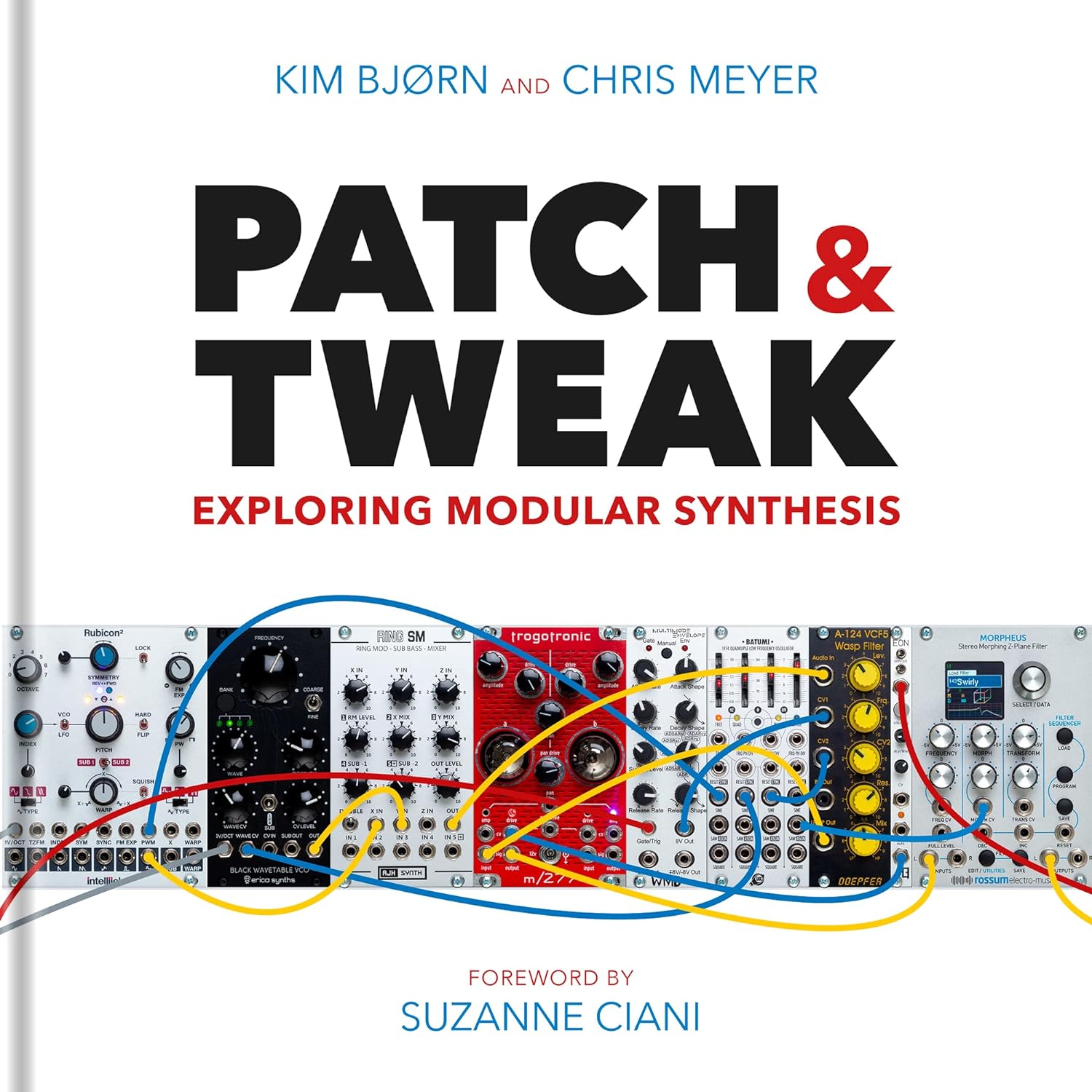
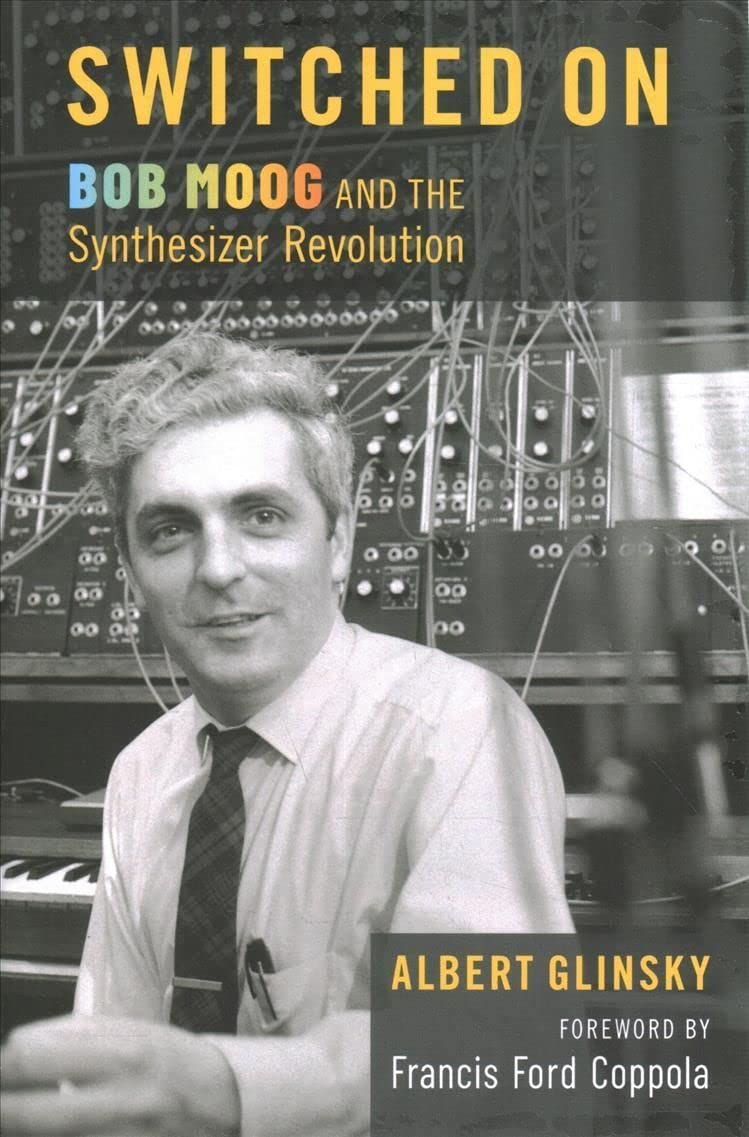
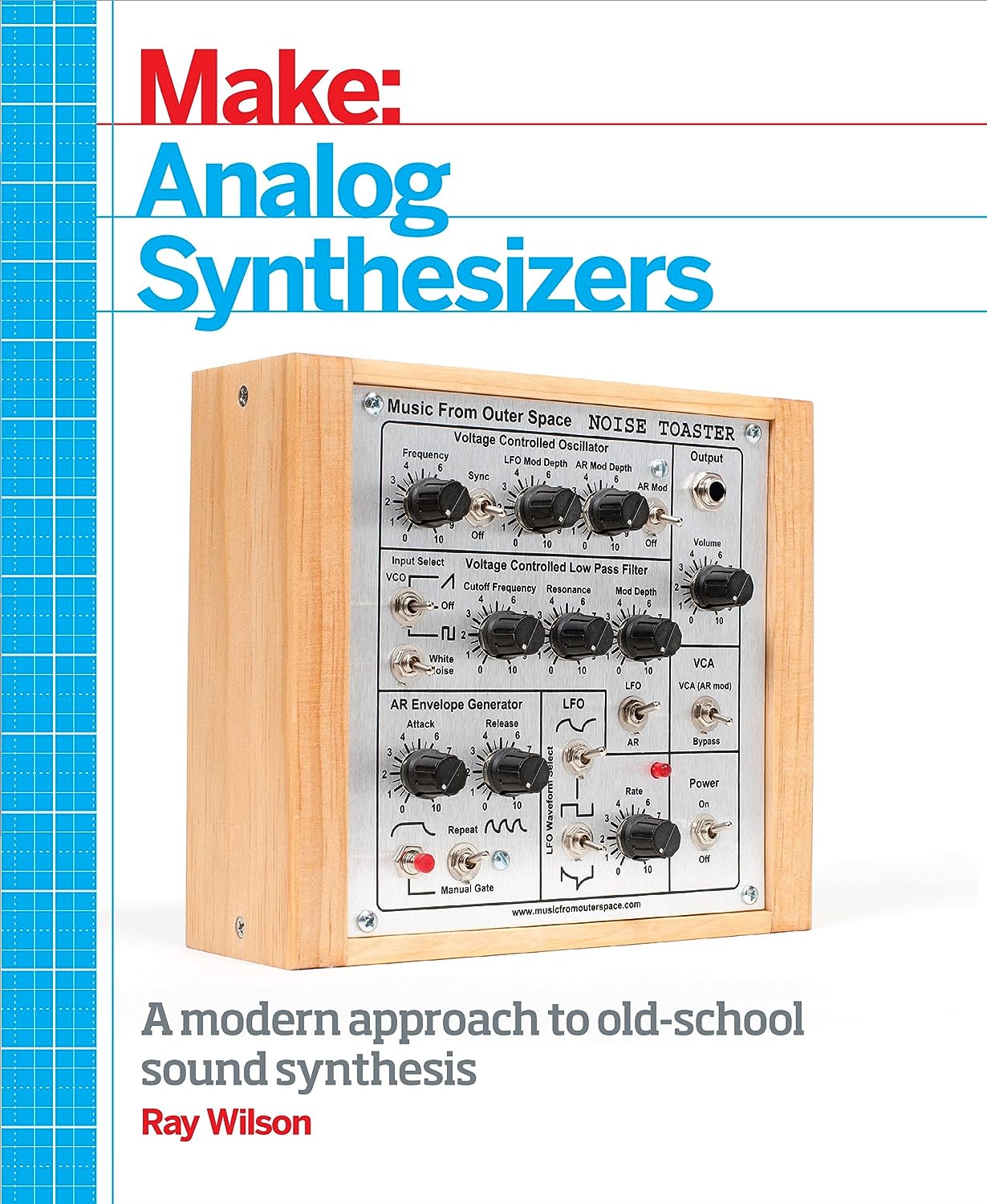
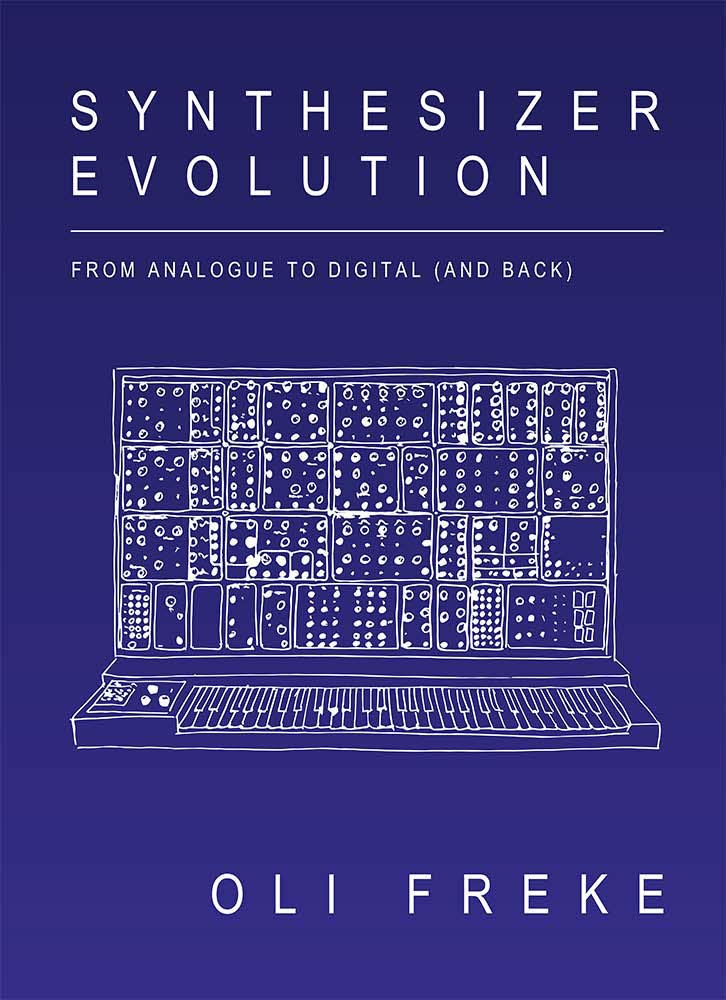
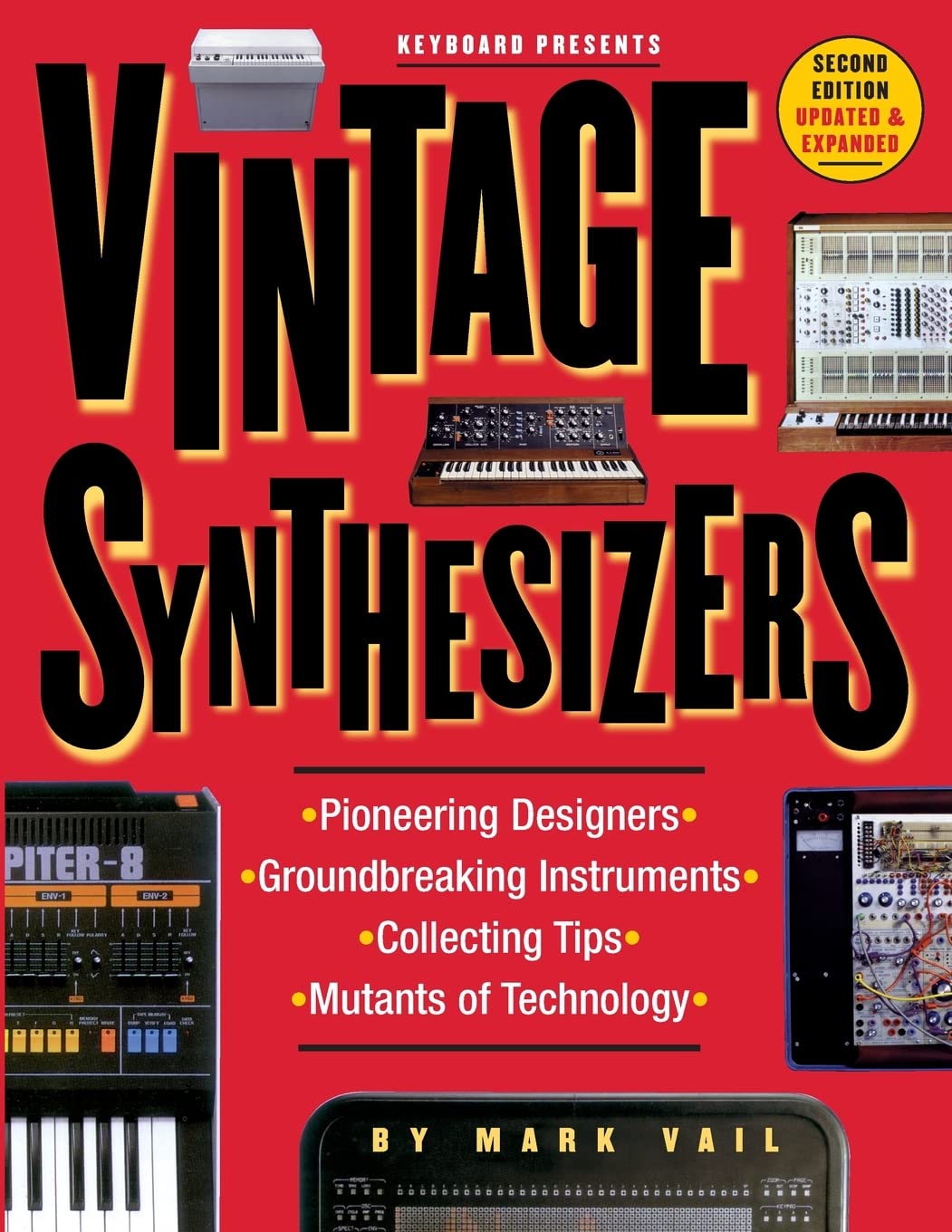
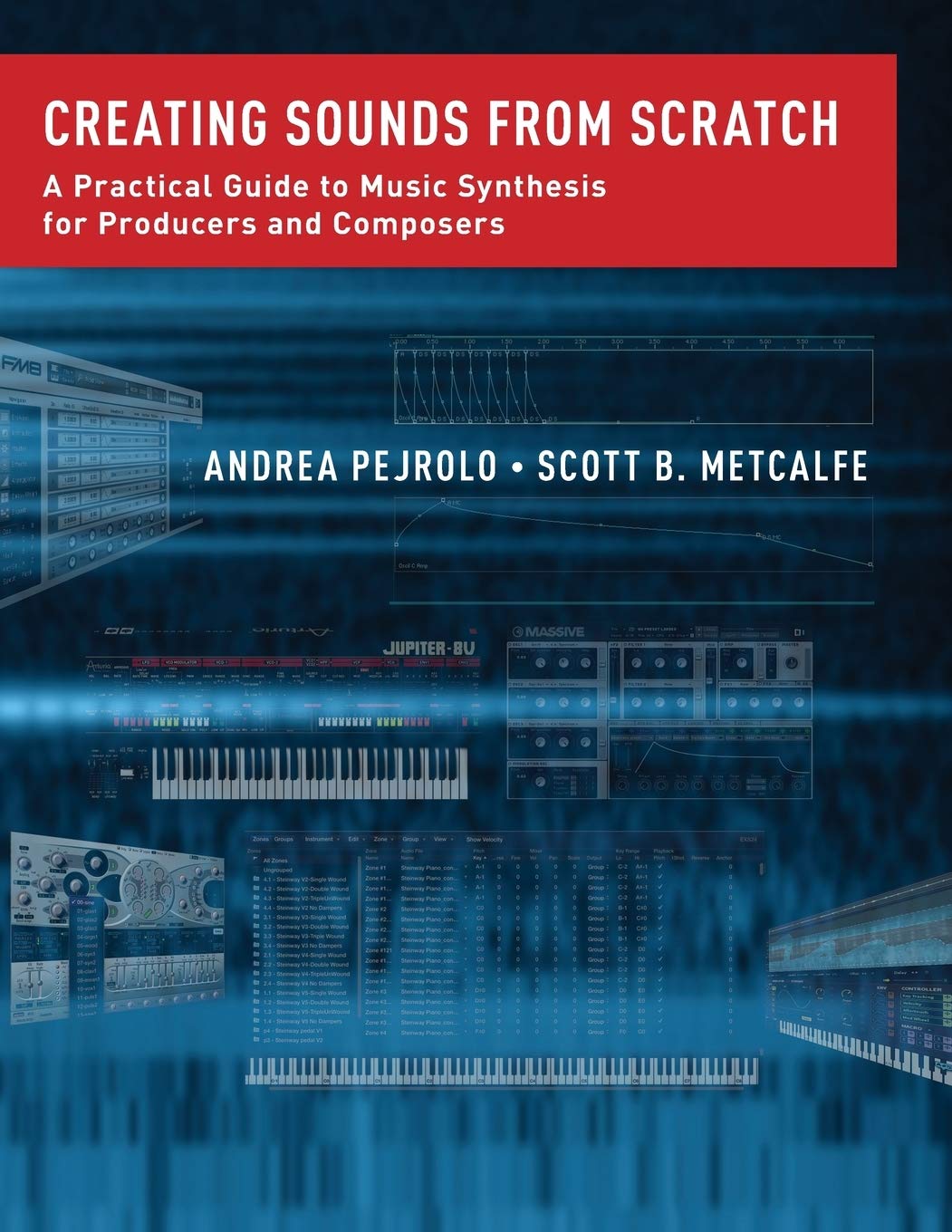
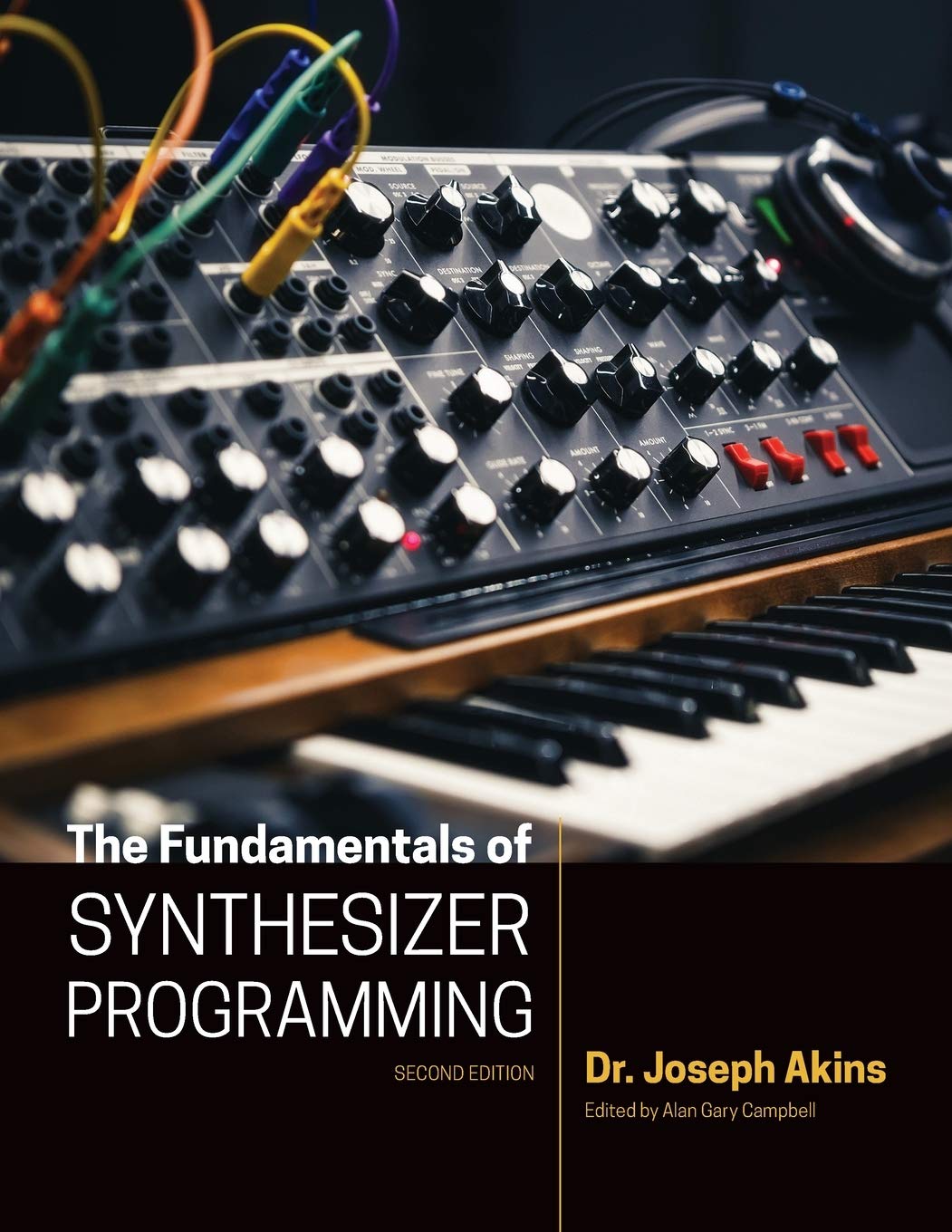
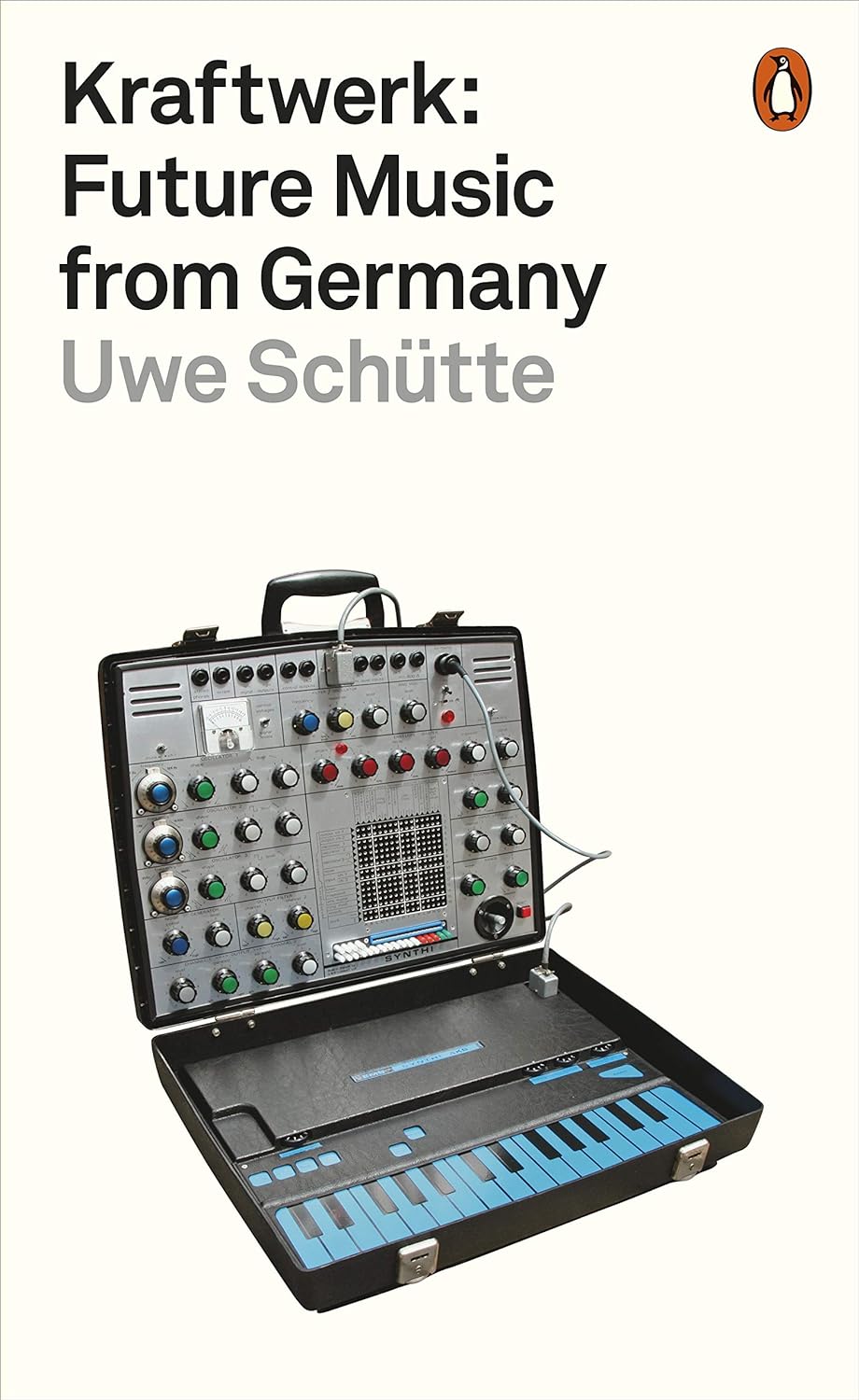
© Matrixsynth - All posts are presented here for informative, historical and educative purposes as applicable within fair use.
MATRIXSYNTH is supported by affiliate links that use cookies to track clickthroughs and sales. See the privacy policy for details.
MATRIXSYNTH - EVERYTHING SYNTH













© Matrixsynth - All posts are presented here for informative, historical and educative purposes as applicable within fair use.
MATRIXSYNTH is supported by affiliate links that use cookies to track clickthroughs and sales. See the privacy policy for details.
MATRIXSYNTH - EVERYTHING SYNTH







